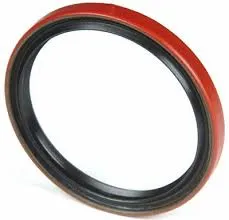10 月 . 02, 2024 14:43 Back to list
High Temperature Rubber Seals for Enhanced Performance and Durability in Extreme Conditions
High Temperature Rubber Gaskets Applications and Benefits
High temperature rubber gaskets are essential components in various industries, offering effective sealing solutions in environments where standard materials would fail. These gaskets are engineered to withstand elevated temperatures while maintaining their integrity, providing reliable seals for a wide range of applications. This article explores the composition, applications, advantages, and considerations for using high temperature rubber gaskets.
Composition and Characteristics
High temperature rubber gaskets are typically made from specialized materials such as silicone, fluorosilicone, or high-temperature neoprene. Each of these materials possesses unique properties. For instance, silicone rubber is known for its exceptional thermal stability, retaining functionality in temperatures as high as 300°C (572°F). Fluorosilicones, on the other hand, offer excellent chemical resistance alongside high-temperature stability, making them suitable for harsh environments.
The gaskets are designed to provide excellent elasticity and compressibility, ensuring a tight seal even under varying pressure conditions. Moreover, their resistance to environmental factors, like aging and ozone, makes them a durable choice for many applications.
Applications
High temperature rubber gaskets are utilized across a broad spectrum of industries
1. Automotive In the automotive sector, these gaskets are used in engine components, exhaust systems, and transmission housings, where they help to prevent leaks of fluids and gases at high temperatures.
2. Aerospace The aerospace industry employs high temperature rubber gaskets in engines and other critical components, where performance and safety are paramount.
3. Manufacturing In manufacturing settings, gaskets are vital in applications involving high heat, such as ovens, furnaces, and boilers. They help maintain high performance and energy efficiency.
4. Oil and Gas Exploration and extraction processes often expose equipment to harsh conditions, including high temperatures. High temperature rubber gaskets are critical for ensuring the integrity of seals in pipelines and processing facilities.
5. Food Processing Many food processing applications require high-temperature seals to prevent contamination and maintain hygiene standards. Silicone gaskets are particularly popular in this sector due to their non-toxic properties.
high temp rubber gasket

Advantages
1. Thermal Stability One of the primary benefits of high temperature rubber gaskets is their ability to withstand extreme heat. This characteristic ensures that they can maintain performance and seal integrity under high-temperature conditions which would degrade standard rubber materials.
2. Versatile Applications High temperature rubber gaskets can be tailored to a variety of applications, accommodating specific temperature ranges, chemical exposures, and physical stresses.
3. Chemical Resistance Many high temperature rubber materials, such as fluorosilicone, exhibit excellent chemical resistance. This quality makes them suitable for use in applications where exposure to aggressive substances is a concern.
4. Durability With proper maintenance, high temperature rubber gaskets can last a long time, reducing the frequency of replacement and contributing to overall operational efficiency.
5. Customizable Manufacturers can produce high temperature rubber gaskets in various shapes, sizes, and thicknesses, allowing for customization to meet specific needs and fit unique sealing applications.
Considerations
While high temperature rubber gaskets offer numerous benefits, there are also considerations to keep in mind. It's essential to select the right material based on the specific application requirements, including temperature, pressure, and chemical exposure. Consulting with a gasket manufacturer or supplier can help in making the right choice to avoid premature failure.
Moreover, proper installation is crucial for optimal performance. Any misalignment or improper handling can compromise the seal, leading to leaks and potential equipment damage. Regular inspections should also be conducted to identify any signs of wear or degradation.
Conclusion
High temperature rubber gaskets play a critical role in ensuring the efficiency and safety of operations in various industries. Their ability to withstand extreme temperatures and harsh environments makes them indispensable in applications ranging from automotive to aerospace and food processing. By understanding their properties, advantages, and appropriate usage, manufacturers and engineers can take full advantage of these essential sealing components. As technology advances, the development of even more resilient materials and custom designs will continue to enhance the capabilities of high temperature rubber gaskets, further expanding their applications in the industrial landscape.